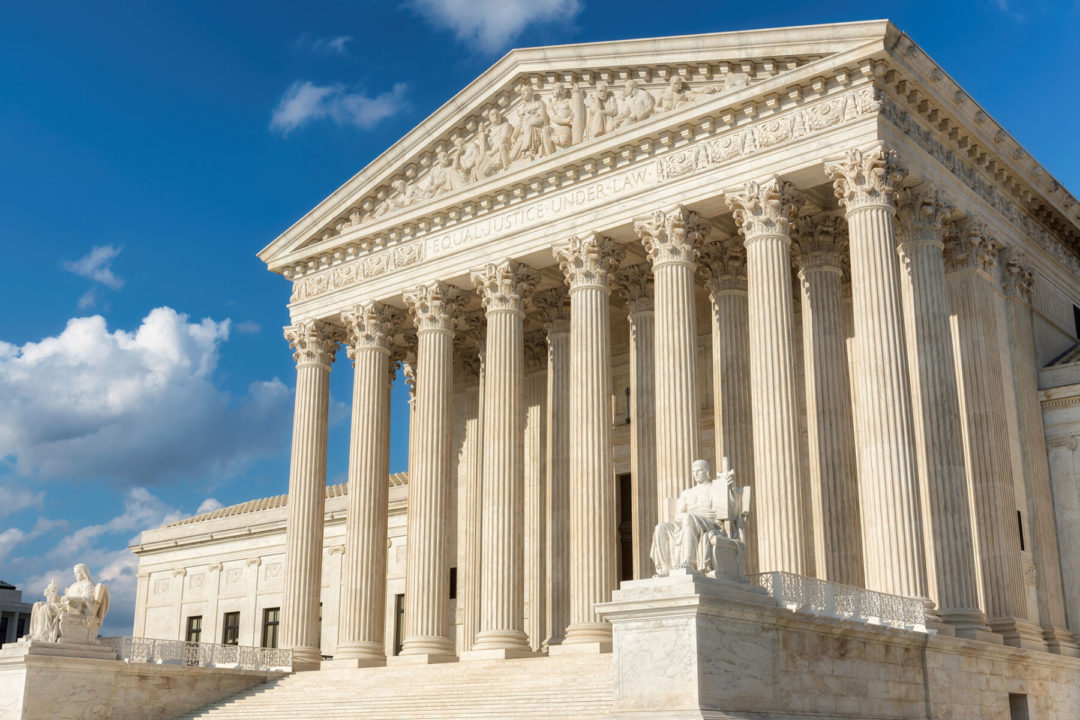One day, the deputy district attorney served them with a citation for having their home outdoor water tank (which had been there since time immemorial) too close to the county road, supposedly in violation of a county ordinance. We knew that he was doing this simply to harass my clients. But it was a way to get back at them for their lawsuits against the local government.
The new case was several weeks old when I had a brainstorm while driving home from a meeting with my clients—I would let the deputy D.A. know that they were going to sue himpersonallyunder Title 42 of the U.S. Code Section 1983 for the violation of their civil and constitutional rights. I quickly called my clients and confirmed that they were onboard with this approach and then placed a call to the deputy district attorney. This call has stuck hard in my memory, during all of these many years since, because I was talking to the deputy D.A. as I drove northward across the Golden Gate Bridge, with the sun starting to set to my left.
“As a fellow attorney, I really hate to tell you this,” I began, “but my clients have asked me to sue you personally in Federal Court under Title 42 for your violation of their civil rights. In Federal Court you won’t have your ‘hometown’ advantage with the county judges whom you know and are friendly with. It will be before Federal judges. And, as you know, my clients are very litigious. They will have me file this suit. You won’t be able to hide behind a governmental-immunity shield and your personal assets, your bank account, your cars, your home, will all be at risk. I just wish there were some way we could dispose of that ridiculous water-tank case.”
The deputy D.A. listened intently throughout my call. The next week he dismissed the charges.
Absolute and Qualified Immunity
Typically, government officials are not held personally responsible for any of their actions while engaged in fulfilling the duties of their office. They have an immunity defense that protects them, sometimes it is anabsolutedefense as in the case of judges, legislators, and law-enforcement officers, the President, diplomats, and certain others, and other times it is aqualified defense for all other government officers when they are sued for damages. Qualified immunity for officials is a defense that can be defeated by plaintiffs under certain established factual situations and its defeat can yield justice for private citizens who have been harmed by increasingly powerful officials and bureaucrats.Yet, in a string of cases, the U.S. Supreme Court has given government officials greater protection under the umbrella of qualified immunity. Time and again, the Court has ruled that any plaintiffs trying to pin personal responsibility on a government official must first show that a court has already established liability on that exact same violation. In other words, it’s a Catch-22: there are only a finite number of court decisions out there stating that a government defendant has violated someone’s constitutional rightsin a specific wayand the Court will not establish any additional specific-rights violations because no previous court ever considered and ruled favorably on those violations!
So, for decades, a plaintiff could only overcome qualified immunity and hold the public official personally liable by proving to the court that the official violated a clearly established civil right established beyond dispute on that exact same fact situation. That has proven to be a very tough hurdle to clear. In fact, in the last 38 years, the Supreme Court has reviewed 30 qualified-immunity cases and only found for the plaintiffs in two! That is, until the Supreme Court’s decision last November inTaylor v. Riojas.
Taylor v. Riojas
On November 2, 2020, the Supreme Court decided its most recent case on the qualified-immunity defense,Taylor v. Riojas. In a brief, 7-1per curiamdecision, the Court held that the Fifth Circuit Court of Appeals had erred in granting qualified immunity to corrections officers who had knowingly placed Texas inmate and plaintiff Trent Taylor in cells so grossly unsanitary that they violated the Eighth Amendment’s prohibition on cruel and unusual punishment.Plaintiff Taylor had entered a psychiatric prison unit to receive treatment following a suicide attempt. But instead of treatment, he received gross mistreatment, for six days. His prison conditions were horrendous: The cells were covered from floor to ceiling in human waste, he had to sleep naked on urine-soaked floors, and he wouldn’t eat for four of those six days because he was afraid of his food getting contaminated. Hardly the mental-health care we might think appropriate. Understandably, Taylor sued the corrections officers personally under 42 U.S.C. §1983 for their violation of his civil rights, while they asserted a defense of qualified immunity.
The District Court found in favor of the defendants because of their qualified immunity and dismissed Taylor’s case. On appeal, the Fifth Circuit agreed with the lower court, rejecting Taylor’s challenge. The defendants, the Fifth Circuit ruled, were entitled to qualified immunity because it was not “clearly established” that theexactconditions of Taylor’s confinement had violated the Eighth Amendment.
With only Justice Clarence Thomas dissenting, the Supreme Court overwhelmingly disagreed, vacating the lower court’s decision, and remanding the case to the Fifth Circuit. In doing so, the Supreme Court stated, “No reasonable correctional officer could have concluded that, under the extreme circumstances of this case, it was constitutionally permissible to house Taylor in such deplorably unsanitary conditions for such an extended period of time.”
The court continued, “Confronted with the particularly egregious facts of this case, any reasonable officer should have realized that Taylor’s conditions of confinement offended the Constitution.” This is the “fair warning” principle that Justice Stevens first stated in the 2002Hope v. Pelzercase, where the key issue was not whether the exact same circumstances had existed previously but whether the circumstances gave the officials “fair warning” that their conduct was unconstitutional. Sadly, in the years after 2002, the Supreme Court allowed this standard to lapse into disuse—until now.
There is a Crack in Everything
Perhaps the unfortunate death of George Floyd in 2020 while in police custody and the huge public outcry that followed may have had some kind of positive influence on the Supreme Court in its decision to narrow the qualified-immunity defense for police officers and other government employees. There have also been some stirrings in Congress by both Democrats and Republicans to alter the law here. Since the Court’sper curiam decision was so terse, we may never know the reasoning behind its sudden change that will allow more plaintiffs to prevail on their Section 1983 claims.Taylor v. Riojasis important because it makes clear that there no longer needs to be an exact case on point for a Section 1983 plaintiff to defeat the qualified-immunity defense. Looking back now on my long-ago call to that deputy D.A. on the water-tank case, I think my successful play to get the case against my clients dismissed resulted from luck as much as anything else. Given the case law at the time, it would have been hard for me to have defeated the qualified-immunity defense that he would have asserted. And my clients would have had to suffer further the harassment of this petty official without recourse.
Still, as Leonard Cohen astutely noted to his audience before singing his well-known songAnthem, “There is a crack in everything. That’s how the light gets in.” The Supreme Court has seen the crack in the qualified-immunity defense and the light is shining in because of it.
Courts should be all about justice, and with an increasingly powerful government confronting all of us, we need whatever tools we may legally and ethically use to protect our civil rights. In my more than 40 years of practicing law, I have found that the best way to do that is to hold the individual government actors personally accountable for their misdeeds. If they know that their own homes, bank accounts, and cars are at risk, and that they cannot hide behind the government’s immunity shield, then their attitude adjustment can be instantaneous and absolutely amazing. The Supreme Court just ensured that such an attitude adjustment will be more easily forthcoming.WF










